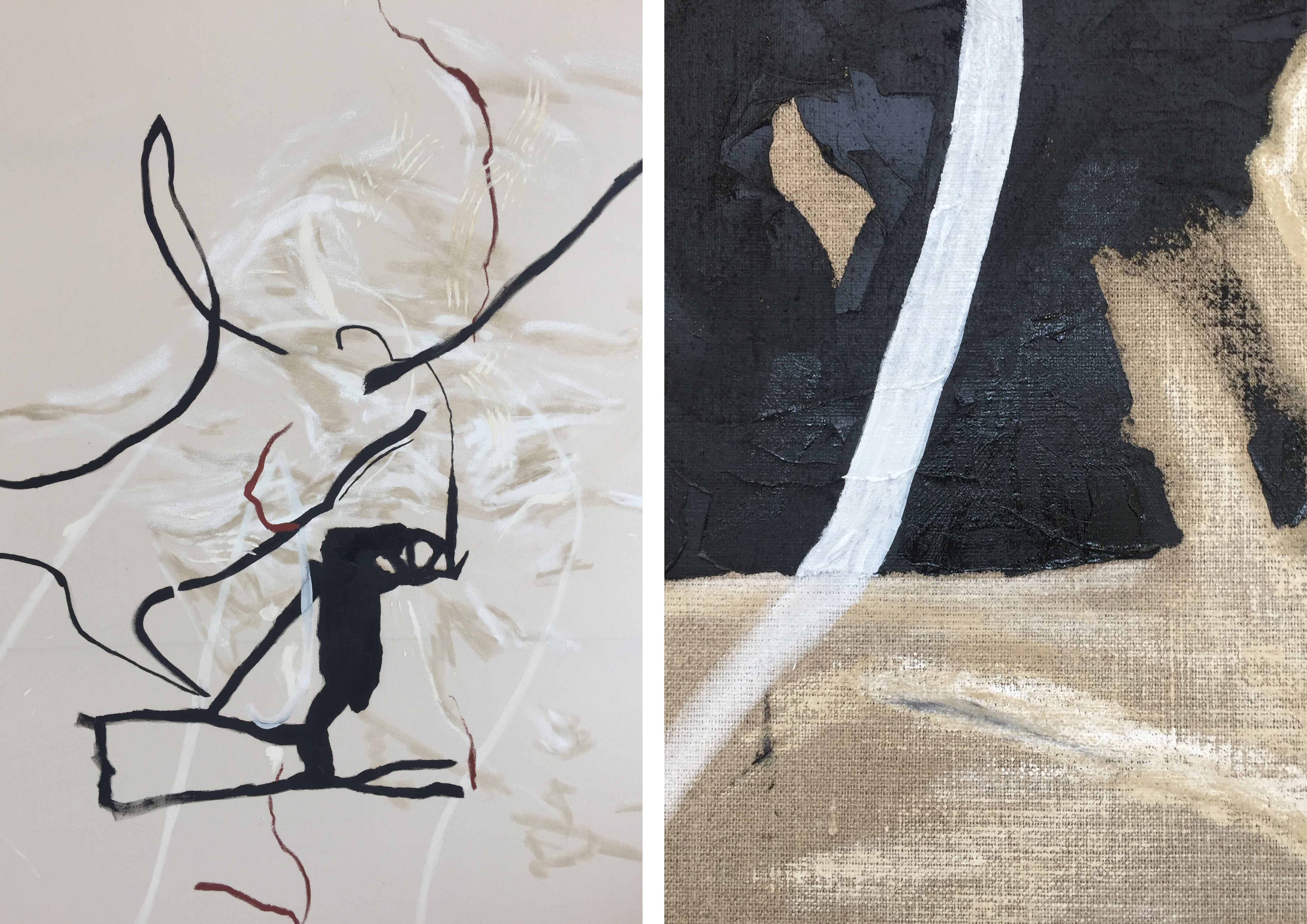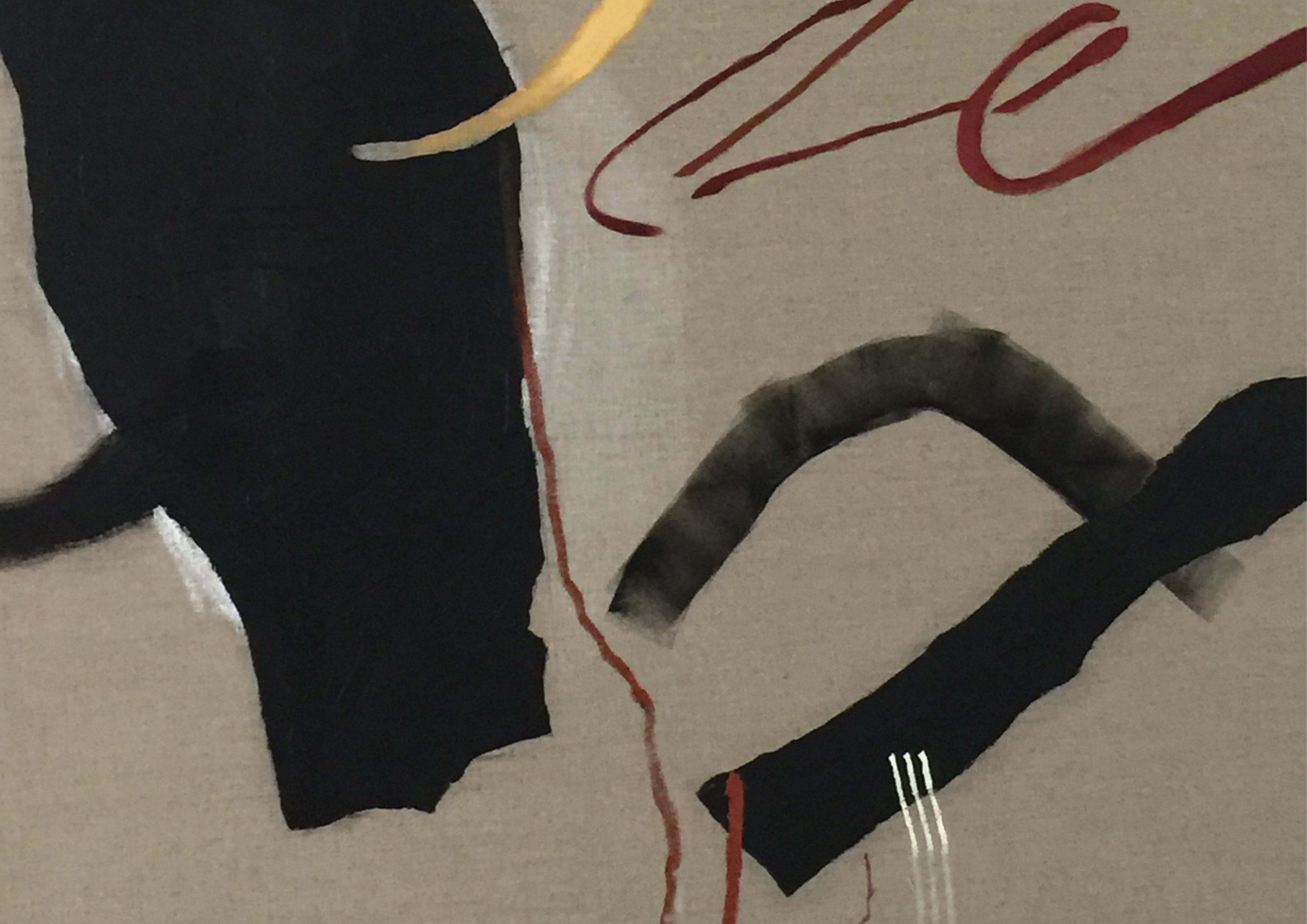
Anthropologist Tim Ingold explores the relationship between writing and weaving.
Drawing, said the artist Paul Klee, is like taking a line for a walk. Try it for yourself. Take a pencil in your hand and let it alight on a sheet of paper. As the tip glides into contact with the paper, a line begins to appear. And it carries on until, with a slight flick of the wrist, you allow the tip to lift off again. What remains on the sheet is the trace of a manual gesture. Depending on how you moved your hand and fingers, it may curve, twist or loop, this way and that. But it will never be perfectly straight. No-one, likewise, ever walks in a straight line, as you can see from the trails of footprints on a sandy beach. There's a difference, of course, between walking and drawing, since with walking every step makes separate contact with the ground. Whereas the movement of the body is continuous, the pattern of prints has an on-off rhythmic pulse to it. Only when many feet have gone the same way do they wear an unbroken path. But the path, like the line made by drawing, twists and turns. So, too, does life itself. Life goes on, precisely because it is not lived at this point or that, but is rather on the way from someplace to someplace else. It is in the detours that everything happens. That's why the stories we tell, of our own and others' lives, also circle around. We have to circle too, to follow them.

But what if we write our stories down? What is a line of writing? And why do we call a written document a text'? Suppose you are writing by hand in a ruled notebook. Here there are two kinds of line. First, there is the letter-line, traced by the tip of your pen. Going up and down as much as across, it is full of wriggles and loops, and moments when the tip lifts off the page, only to alight again. But second, there are ruled lines that run horizontally and in parallel, dividing the page into equidistant rows. Nowadays these lines are printed mechanically, but in the past, when scribes worked on parchment, they were lightly scored by hand, using a penknife and a ruler. For the medieval scribe as for you today, these ruled lines would act as guides, ensuring that successive letter-lines, as they wriggle across the page, keep to their respective rows. And unlike the other kinds of line so far considered, the ruled line is perfectly straight. It is so because it is already predetermined, by the edge of the rule, even before it is inscribed into the surface. What we call a line of writing, however, is neither the letter-line nor the ruled line but a combination of the two: the oscillation of the one within the constraints of the other. Nor is this combination unique to writing. For it was foreshadowed in the instrument of weaving: the loom.

The Latin verb for to weave' was texere, whence come our words textile' for fabric, and text' for writing. As the letter-line oscillates between the ruled lines of the page, so in weaving, the weft loops back and forth between the parallel lines of the warp, stretched taut on the loom. What, then, is the difference between writing and weaving? They deal, of course, in lines of different kinds, traces and threads. You could take a thread for a walk as you could a trace, and you could stretch it on a frame as you could rule it on a surface. Could taut threads have been the first straight lines? In the chalk-line used by masons since pharaonic times to mark stones for cutting a powder-coated thread is first stretched tight over the surface to be marked, and then plucked to make it vibrate. Instantly, a rectilinear trace is deposited on the surface. As this example shows, you can do things with threads that you cannot with traces. You can stretch them, lift them, pluck them, wind them up and unwind them again. The thread, nevertheless, does not simply emerge as you go along. It has first to be spun. That is why the pen differs from the needle. With the pen, the line issues from the tip; with the needle it is threaded through the eye, while the point seeks an opening through which to draw the thread to form a stitch. In the walk of needle and thread, every step is a somersault.


Nowadays the hand crafts of spinning and weaving, once ubiquitous, are largely confined to hobbyists. Even handwriting is endangered as most of us tap our lines on keyboards. What kind of lines are these? Every letter is of a predetermined shape, not traced out but instantly delivered. And the line is but a sequence of letter-shapes, each complete in itself, and detached from its predecessors and successors. It is like the dotted line: a connected sequence of points rather than the trace of a movement. Today, when we speak of lines, it is most often to such a sequence that we refer. Linear thinking, we say, goes from point to point; linear transport from location to location; linear time from moment to moment. Of thinking, travel or time that wanders off course, or loops around, we are inclined to say that it is non-linear'. Yet did you not just draw a line with your pencil? Does the winding path not follow a line, as does the story with its twists and turns? Indeed, what we witness today is not the birth but the death of the line. To reduce a linear movement to a rigid sequence of fixed points is to drain it of vitality, of everything that gives it life and growth. For the living world, in truth, is not connected like a net, but a writhing mesh of lines. Knotted in the midst, their loose ends never cease to root for other lines to tangle with.
Words by Tim Ingold, Emeritus Professor of Social Anthropology, University of Aberdeen and author of Lines: A Brief History, Routledge, 2016. Artwork by Elena Barber: 'A suggestion of time', 2019. Oil, chalk and pastel on canvas.
Add a comment